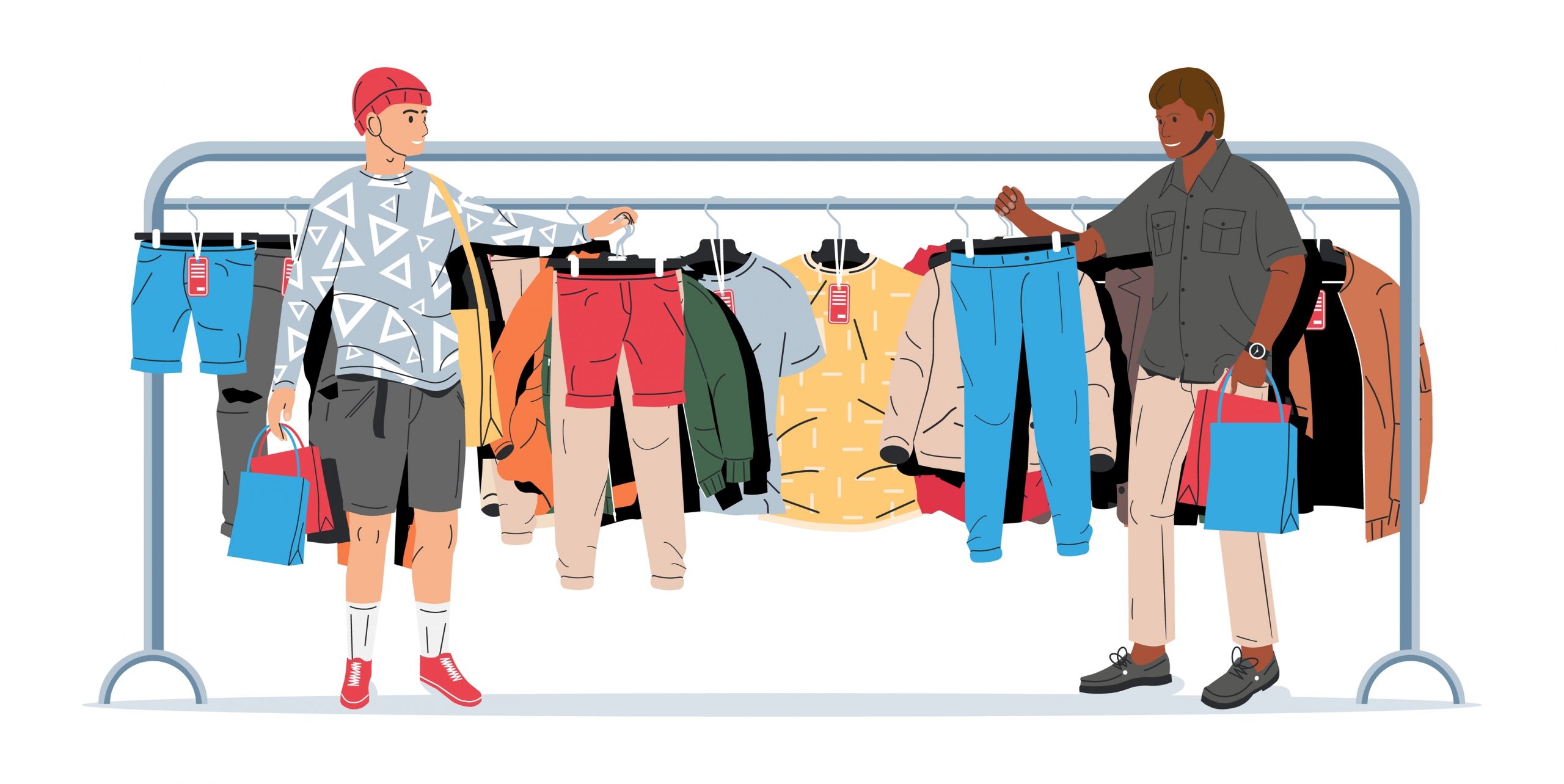FOR YEARS, Josh Huisken has struggled to find the perfect pants. For the 28-year-old programming coordinator from Minnesota, a shopping trip might yield jeans that fit great on the leg but too snugly around the waist, or dress trousers that drape oh-so-elegantly yet don’t even reach his ankles. “There’s always one box I can’t check off,” he said.
Many men can likely relate. In recent years, wildly opposing trends and a wave of oddly fitting styles have turned pants shopping into “a daunting task,” said New York stylist Taylor Okata. Finding a winning pair, or just knowing what to look for, is a tall order for even the savviest fashion folks.
You might be left wondering: To be stylish, must I attempt wide, clown-like trousers? What’s the deal with length now—should pants break at all? And, once—no, if—I find a pair I actually like, should I cuff them?
Here, style experts offer guidance on four of the most common head-scratchers.
DILEMMA: I can’t keep up with all the trends. How long should my pants be?
SOLUTION: Avoid super-cropped cuts, and pay close attention to where your pants break.
Though menswear flip-flops between celebrating cropped and superlong styles, some constants are worth keeping in mind. For starters, never go barefoot when trying on pants—you need to know where they hit your shoes, said Okata. “Bring the shoe you’re typically going to wear with them. It’s going to change how the pant falls.”
Okata implores guys to avoid styles that end well above the ankle, leaving a sizable gap atop your shoes. By breaking up your leg, super-cropped styles distort your proportions, he said. “If a guy is shorter, they think they need to have a cropped pant [to look taller], but that’s not always the case.” That means sidestepping the popular, cropped “carrot fit,” a perplexing cut that’s wide at the top and tapered lower down (yep, like the vegetable).
Longer styles can also be risky. Atlanta designer Sid Mashburn recommends most folks dodge extra-long pants, trendy as those may be. When fabric bunches up around your ankles and shins, it disrupts the pants’s flow and shortens the leg, he said. He likes a subtle break—a small dimple above the hem—but his ultimate length? When pants stop just short of breaking on shoes. It makes you look taller, he said, yet doesn’t veer into awkward cropped territory.
DILEMMA: Ultrawide pants aren’t for me. What width is stylish but more doable?
SOLUTION: Go for straight legs or slightly wider, pleated pants.
In general the pendulum has swung from slim to relaxed fits. Some cooler-than-thou stores take that to an extreme, selling designs as wide as tents. But Constantine Giavos, a suave New York DJ, has found a happy medium in straight-leg cuts. The 33-year-old enjoys that streamlined silhouette in cargo pants, pleated dress trousers and in his favorite, vintage Levi’s 501s. The “clean lines” and versatility of straight-leg pants stands out to Jian DeLeon, men’s fashion director at Nordstrom. “You can wear them with an overshirt or a sport coat and not look frumpy,” he said. Want a wider style? To avoid looking sloppy, go for roomier options with pleats, he said. “A smart, simple pleat gives trousers an elegance and sleekness.”
DILEMMA: Pants off the rack never seem to fit right.
SOLUTION: Befriend a tailor.
Dragging hem? Billowing at the hips? Buying pants off the rack is a crapshoot. A few months ago, Huisken’s frustration with ill-fitting styles drove him to enlist a local tailor. He hasn’t looked back. “My tailor now helps me navigate what pants I buy and gets my jeans exactly how I want them,” said Huisken, who mostly gets the waist and length tweaked at a cost of about $20 per pants. He has also found success with some bespoke black trousers by Los Angeles designer Nora Petersen, who offers a customizable inseam and waist.
Wear shoes when a tailor fits your pants, noted Okata (just like when shopping for new trousers). He suggests buying straight-leg cuts and other styles a size up and having the waist taken in to achieve a just-so, relaxed fit. A tailor, said DeLeon, “makes the difference between getting pants that are 90% there and 100% there.”
DILEMMA: To cuff or not to cuff?
SOLUTION: Cuff tailored trousers. Don’t bother on casual slacks.
Breathe easy: “Neither is a deal breaker,” said Mashburn. Though it comes down to personal preference, he said, a no-cuff situation skews cleaner and more minimal, and works well on chinos and cords. DeLeon prefers casual pants without a rolled cuff, because “you want a bit of softness to the silhouette,” he said. “If you wear them without a cuff so that they fall on the shoe, it just feels more natural.” But on jeans, he said, rolling is fine.
Adding a tailored cuff to dressier trousers can enhance their drape, said Mashburn. “Because [a cuff] doubles up the fabric, it provides weight to the bottom of the pant so it hangs well.” He recommends wool and linen—“the most flowing fabrics”—as top cuffing candidates, and suggests asking a tailor to add a cuff that’s precisely “an inch and three-quarters” deep. That depth “has some heft but not too much. It doesn’t really know an era, it seems timeless.”



